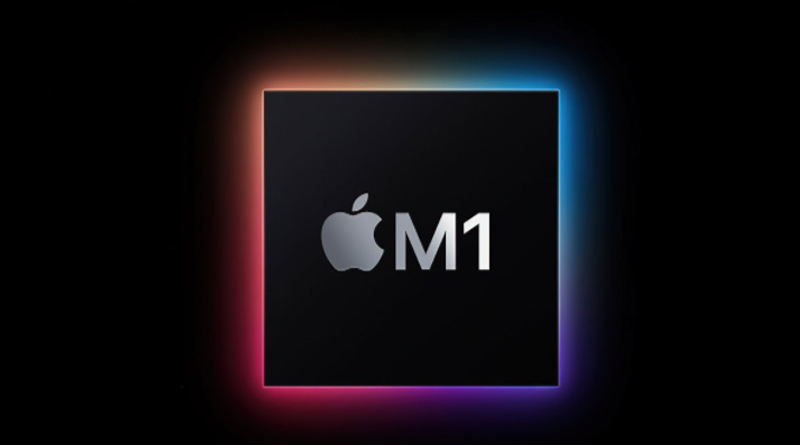M1
The hang tight is over for Apple’s custom silicon for Macs. The organization’s first work area chip, the M1, presently controls the most recent 13-inch MacBook Pro, MacBook Air, and Mac smaller than expected. The SoC utilizes 5nm engineering, similar to the iPhone 12 and iPad Air 4, and is quicker than 98% of PC workstations.
- Neural Engine for machine learning
- Enormous claimed performance and efficiency boosts
- Powers late-2020 MacBook Air, 13-inch MacBook Pro, and Mac mini
- Apple Silicon for Macs
- 5nm architecture
- Performance, Efficiency, and GPU cores
The M1 is the primary Apple Silicon framework on-a-chip (SoC) for Mac. Expanding on Apple’s chip establishment from cell phones, the M1 brings an uncommon mix of execution and effectiveness to the Mac line.
Apple declared the M1 at its November 2020 “One More Thing” occasion. Following 15 years of joining forces with Intel for Macs, the M1 is the organization’s initial introduction to creating custom Apple Silicon for Macs. The new SoC powers the late-2020 models of the 13-inch MacBook Pro, MacBook Air, and Mac smaller than usual.
M1 Features
System-on-a-chip
While Intel-based Macs had separate chips for the processor, I/O, security, and memory, the M1 adopts the coordinated strategy normal to cell phones and carries it to the work area. In the M1, the processor, illustrations, RAM, and SSD are largely on a similar chip. This coordination improves on the arrangement, taking into consideration better effectiveness and execution.
Vertical reconciliation additionally permits Apple to advance execution. Intel’s silicon needs to control macOS, various significant corrections of Windows extending back over 10 years, Chrome OS, and Linux. The further confusing issue, Intel’s processors need to work across a scope of Windows PCs from HP and Dell to Samsung, LG, and Microsoft’s Surface line. In the interim, Apple can plan its chips, equipment, and programming from the beginning to cooperate consistently.
M1 Architecture
The M1 chip utilizes a 5-nanometer measure innovation and is the main individualized computing chip to utilize that design. The A14 Bionic, fueling the iPhone 12 family and iPad Air 4, is additionally a 5nm chip.
The M1 incorporates eight handling centers and up to eight extra GPU centers. The handling centers are parted between four superior centers and four proficiency centers:
The elite centers spend significant time running a solitary errand with speed and effectiveness. Models would incorporate handling a clump of documents or running requesting efficiency applications.
Proficiency centers handle lighter jobs. They will probably utilize just as much force as is required for more clear errands like browsing email or stacking a site page. Giving off these essential errands to the proficiency center opens up the presentation centers to maximize speed for additional requesting capacities. Apple says the proficiency centers utilize 1/10 of the force while as yet conveying “extraordinary execution.”
The coordinated GPU handles graphically exceptional assignments like photograph and video altering, playing a game, or yielding video to an outer showcase. Apple says the M1’s illustrations centers can all the while handle almost 25,000 strings and have “the world’s quickest incorporated designs.” Apple offers seven-center and eight-center GPU variations. The passage-level MacBook Air is the solitary M1 machine right now with the seven-center cutoff.
With 16 billion little semiconductors estimated at the nuclear scale, the M1 has the most semiconductors of any Apple chip to date. The M1 chip likewise has an implicit stockpiling regulator that oversees information stream to and from Mac’s SSD.
Apple’s silicon has a bound together memory design (UMA) that consolidates high-data transfer capacity and low-inactivity memory into one pool inside a custom bundle. The UMA lets all fragments of the M1 access similar information without duplicating between various memory pools, boosting both executions and force the executives. Apple says the UMA will take into account up to 3.9x quicker video preparation and 7.1x speedier picture handling.
M1 Performance and Efficiency
Apple says the M1 conveys advancement execution and productivity, with its new chip conveying up to twice the speed of the greatest performing CPUs for scratchpad at the trying period.
A supposed Geekbench benchmark from an M1-running MacBook Air supported up those grand cases with scores of 1687 in single-center and 7433 in multi-center. Those grades would put the M1’s exhibition a long way in front of all MacBooks, including a maximized 16-inch MacBook Pro, alongside the Mac scaled-down and numerous iMacs.
The benchmark recorded the MacBook Air being referred to as having an octa-center CPU timed at 3.2GHz alongside 8GB of RAM. Apple hasn’t declared authority clock speeds for the new chip.
Alongside gigantic execution helps, the M1’s proficiency additionally takes into consideration longer battery life. Those evaluations for the 13-inch MacBook Pro leap to 17 hours for web and 20 hours for video. Those areas long as 10 hours longer than Apple’s evaluations for their Intel-based counterparts.
Apple’s mix between the M1 and macOS likewise assists with both execution and productivity. Apple designed its most recent update, macOS Big Sur, to upgrade the M1’s force and life span. The organization says the gadgets wake from rest in a split second on Apple Silicon Macs, like iPhones and iPads. Apple expresses that applications likewise dispatch almost quickly, activities are snappier, and Safari looking over is smoother.
Native iPhone and iPad apps
With the M1 imparting an establishment to Apple’s portable chips, designers can alternatively offer their current iPhone and iPad applications on the Mac. These applications will work locally on Apple Silicon Macs with negligible additional advancement time and exertion, including Mac highlights like window resizing, mouse and trackpad backing, and menu bar alternatives.
Engineers should select into offering macOS variants of their iOS applications. Regardless of whether some famous application engineers choose to pass. This new similarity ought to altogether help the Mac App Store’s library.
Other M1 Features
- Programmed document encryption and other security assurances
- Huge Sur’s Rosetta 2 virtualization keeps Intel applications running until refreshed for Apple Silicon
- 16GB greatest RAM
- Picture signal processor for more noteworthy picture quality in video calls
- The most recent Secure Enclave
- Thunderclap regulator with help for USB 4 (40Gbps max)
What’s Next
Apple says its progress from Intel to Apple Silicon will require two years to completely finish. Regardless of its huge lifts in execution and force the executives. The M1 is just the start for Apple SoCs on the Mac.
Given its 16GB RAM limit. We can anticipate that Apple should supply higher-roof chips for Macs that still can’t seem to do the switch, including the 16-inch MacBook Pro, iMac, iMac Pro, and Mac Pro.
The M1X or M2
A benchmark expectation of sorts has spilled about an impending Apple Silicon processor called the M1X. The benchmark showed up on CPU Monkey. Yet since it can’t be confirmed, it is, even more, a forecast rather than a real statement of specs.
Apple might deliver a processor called the “M2” all things considered. The naming isn’t significant, yet whatever the following M-series processor. it will be utilized to control Apple’s most remarkable PCs.


